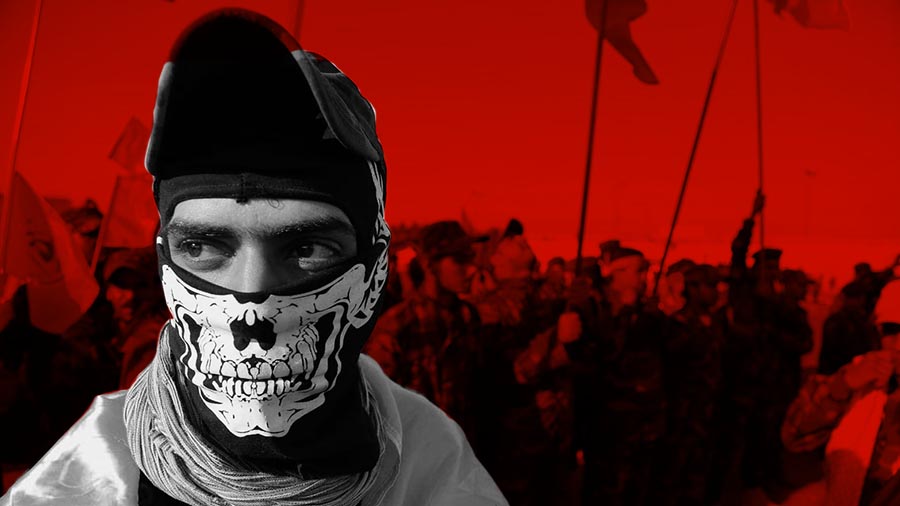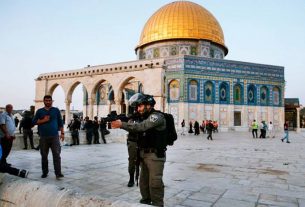Tue 31 December 2019:
In a country that’s 60 percent Shia, the militias have played a crucial role in the war against ISIS. Their involvement, however, has already alienated some of the country’s Sunni population, sowing the seeds for future tensions.
Some of the Shia militias have a long record of sectarian abuses, and experts say renewed reports of detentions, disappearances, and in some cases summary executions of Sunnis by militia members, could one day result in another Sunni insurgency — like the one that led to ISIS’s rise.
Here, we explore the various Shia militias involved in the fight, the allegations against them and their array of allegiances and ideologies.
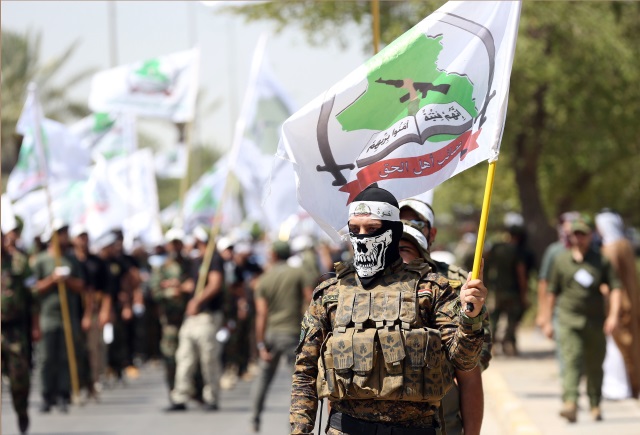
Who are Iraq’s Shia militias?
Shia militias are an old phenomenon in Iraq. The Badr Organization, one of the oldest and most powerful militias in the country, fought alongside Iran against Saddam Hussein’s forces during the Iran-Iraq war in the 1980s. Iranian-backed militias like Badr, the Hezbollah Brigades and Asaib Ahl al-Haq also fueled a sectarian insurgency during the United States occupation of Iraq.
Shia militias reached new heights of power in Iraq in the aftermath of ISIS’s rampage across the country in 2014. As Iraq’s army crumbled and ISIS seized Mosul, the government relied heavily on Shia militias to halt ISIS’s further advance. That June, Iraq’s top Shia cleric, Grand Ayatollah Ali al-Sistani, called on his followers to bolster the state’s security forces, but the call would instead serve to swell the ranks of Shia militias. Militias new and old were soon incorporated into the Popular Mobilization Forces (PMF) — an umbrella group that’s predominantly Shia but now also includes Sunni tribal fighters, Christian militias and other non-military forces fighting ISIS.
Experts say Iraq’s Shia militias fall into three broad categories: those backed by Iran (the largest of the three blocs), those with ties to Iraqi political parties or politicians, and those who consider themselves followers of Sistani and the Shia religious establishment in Iraq. Militias that fall into these last two categories are more likely to be nationalist and wary of Iran.
The groups have little in common, according to experts.
“Their commonality is basically [being] anti-ISIS, and that’s it,” said Renad Mansour, a fellow at Chatham House, an independent policy institute in London. “Once you stop talking about ISIS as an external threat, they actually have a lot of differences amongst each other, ideological, strategic and administrative differences. What brings them together is this fight.”
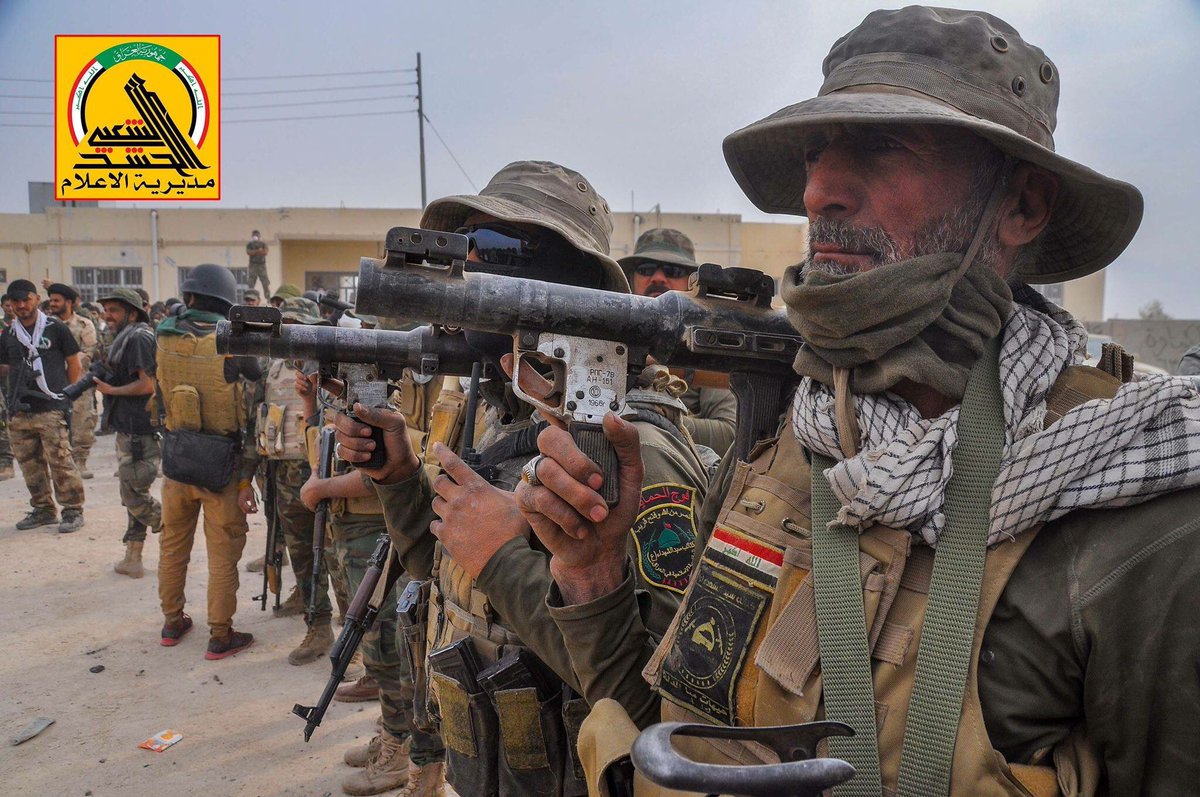
How many fighters do they have?
It’s hard to say. Estimates have put the number at around 100,000, but because of the informal structure of the militias, it’s impossible to provide a precise number.
“There isn’t a database. It’s not like enlisted soldiers with salary payments, so it’s really hard to tell,” said Mansour. While some militias are well established, others “are really just neighborhood watches and armed groups.”
By comparison, a recent analysis by Michael Knights, a fellow at the Washington Institute, puts the strength of Iraq’s security forces in May 2014 at 221,000 — shortly before the army’s collapse in Mosul.
What role have they played in the fight against ISIS?
Experts acknowledge the critical role Shia militias played in holding territory when Iraq’s army was in a state of collapse in 2014. But they say the militias’ track record since then has been uneven.
“They operate separate campaigns and don’t coordinate with each other,” said Patrick Martin, a researcher at the Institute for the Study of War. “They’re not very good at what they do. They’re not an effective or disciplined force overall.”
One particular weakness, said Martin, has been their inability to recapture and hold urban terrain. In the areas where Iranian-backed militias like the Badr Organization and the Hezbollah Brigades do hold terrain, Martin said, reports of sectarian violence fuel resentment among the local population, creating openings for Sunni insurgent groups like ISIS to develop safe havens and launch attacks.
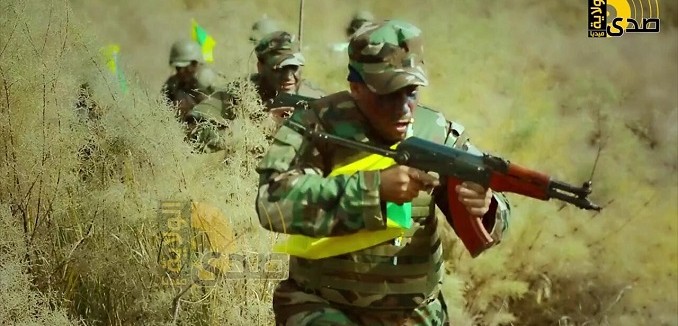
What is their human rights record?
Human rights groups have documented sectarian violence and revenge attacks in the fight against ISIS, predominantly attributed to the Iranian-backed Shia militias.
In 2016, Human Rights Watch warned that the Shia-dominated Popular Mobilization Forces should not take part in the offensive to retake Mosul because of sectarian abuses attributed to them during previous offensives. The report said Badr Organization and the Hezbollah Brigades allegedly detained and beat hundreds of Sunni men who were escaping from fighting in Fallujah. Dozens were reportedly executed, hundreds were disappeared and a dozen corpses were mutilated. Badr, the Hezbollah Brigades, Asaib Ahl al-Haq and other militias were also accused of detaining Sunni civilians without the authority to do so, and looting and destroying property. The alleged abuses, Human Rights Watch noted, followed similar allegations near other ISIS-held towns liberated with the help of Shia militias.
In 2016’s Confronting ISIS, Hadi al-Amiri, the leader of the Badr Organization, told FRONTLINE, “I don’t claim that there are never violations that occur during war.” Added Ameri, “This is a war, and in a war, there are violations.”
Over time, Iranian-backed militias have been gradually sidelined in recent battles against ISIS, and in the ongoing fight to recapture Mosul, they have remained to the west of the city.
“After Fallujah, there was incredible blowback and it was felt particularly by Prime Minister [Haider al-Abadi], and he had to make promises to the international community and to the Sunni community that Mosul wouldn’t look the same,” said Belkis Wille, Human Rights Watch’s senior Iraq researcher.
In 2016, UN High Commissioner for Human Rights Zeid Ra’ad al-Hussein said that there was strong evidence that Iran-backed Shia militias had committed atrocities in the recent battle to reclaim the Iraqi city of Fallujah from ISIS.
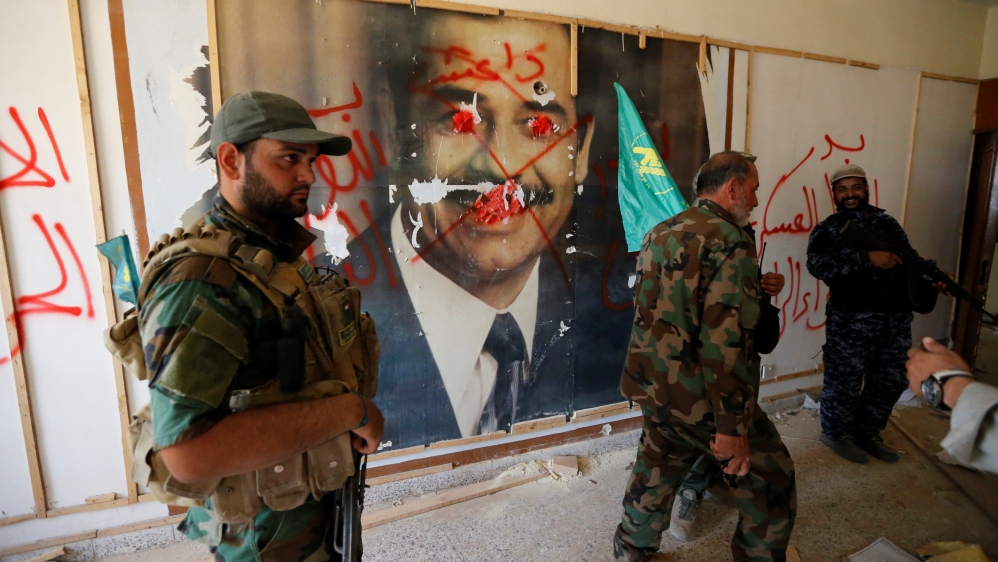
More than 900 men and boys from heavily Sunni Fallujah remain missing, and may have been kidnapped, from areas that were captured by the Shia militias, known as Popular Mobilization Forces or PMFs. Forty-nine people who were kidnapped have been executed by Kata’ib Hezbollah, one of the PMF militias, which the United States designated a terror group in 2009. Prisnors released from Kata’ib Hezbollah’s captivity have described scenes of torture and abuse. “This appears to be the worst – but far from the first – such incident involving unofficial militias fighting alongside [Iraqi] Government forces against ISIL,” Zeid said in a statement.
PMFs have been a key part of the Iraqi government’s strategy for defeating ISIS, but this has meant empowering Kata’ib Hezbollah and other Iran-backed groups that have been accused of severe human rights violations. The U.S. was originally opposed to the presence of PMFs in anti-ISIS operations, but has since relaxed its stance, effectively allowing Iran to use the militias to dominate large swaths of the country. Secretary of State John Kerry said last week that Iranian efforts in the country have been “helpful.”
Many analysts fear that Shia militias like Kata’ib Hezbollah could worsen sectarian divides in Iraq and prevent Sunnis from reintegrating with the central government in Baghdad, possibly leading to more violent reprisals against Shia civilians.
Former U.S. Ambassador to Iraq Zalmay Khalilzad cautioned in a Wall Street Journal interview last month that PMFs “remain a basis for continuing conflict and for conditions that lead to the rise of terror, maybe in a different name after ISIS.”
This is consistent with security expert Michael Pregent’s assessment last year, when he noted that Iran and its allied Shia militias were only fighting ISIS on the margins, refusing to extend themselves too far to fully finish them off.
What’s known about their ties to Iran?
For some of the most influential Shia militias, such as the Badr Organization, the Hezbollah Brigades and Asaib Ahl al-Haq, their loyalties lie with the elite Quds Force of Iran’s Islamic Revolutionary Guard Corps — and ultimately, Iran’s supreme leader, Ayatollah Ali Khamenei.
The leaders of these groups — influential yet divisive for their roles in past sectarian conflicts — are nonetheless responsible for managing the administration of the Popular Mobilization Forces. Their militias also receive weapons, funding and training from Iran. During the war against ISIS, Iran has sent military advisors to Iraq, including the head of Iran’s Quds Force, Qassem Suleimani, who has been pictured several times on the front lines in Iraq.
Iran’s influence is such, according to Phillip Smyth, a researcher at the University of Maryland, that even more nationalist Shia militias, while critical of Iran’s role in Iraq, will show up with Iranian weapons.
What is the relationship between Shia militias and the Iraqi government?
In 2016, Abadi formally recognized the Popular Mobilization Forces, which most of the Shia militias are a part of, as an “independent military formation” in Iraq’s security forces. In November, Iraq’s parliament went a step further, voting to legalize PMF militias and provide fighters with salaries and pensions.
While the PMF is supposed to answer to Abadi, experts say the prime minister has little say in the individual militias’ actions.
“When you look at the actual comings and goings or actual movements going on, Abadi exerts very little control outside of Baghdad,” said Smyth.
As the militias grow in strength, experts warn of the likelihood that they will become an even more entrenched parallel military force that poses a threat to the long-term stability of Iraq.
That’s because the fighters’ allegiances are not necessarily to the Iraqi government, but to the leadership of their individual militias, Smyth said. For fighters in the Peace Brigades — a reconstituted version of the Mahdi Army — that means Iraqi cleric and politician Moqtada al Sadr, who fought against U.S. forces during the Iraq war, but now remains wary of Iran while supporting Iraqi sovereignty.
For militias aligned with the religious establishment in Najaf, loyalty rests with Iraq’s top Shia cleric, Ayatollah Sistani, who has called on them to help protect Sunnis. Unlike other militias, those loyal to Sistani actually follow commands from Iraq’s security forces. While the militias backed by Iran and those affiliated with political parties have started making the case for their continued presence after ISIS’s defeat, it’s likely that Sistani’s militias will be dissolved after the fight is over.
What does the U.S. government say about them?
The U.S. government has long maintained that it does not support the militias — and it has even gone so far as to officially label groups such as the Hezbollah Brigades, also known as Kataib Hezbollah, as terrorist organizations. Coalition-supported offensives against ISIS in 2015 and 2016 saw a careful dance with U.S.-led airstrikes trying to stay away from areas where Shia militias were spearheading the assault.
“We do not enable Shia-backed militia at all,” former Secretary of Defense Ash Carter told FRONTLINE in August 2016. “We only support and enable forces that are subordinate to Prime Minister [Haider al-Abadi]. This is fundamental, because the hell of Iraq has been sectarian violence.”
In 2016, the defense secretary, James Mattis, cited Iran’s proxy militias as one of the reasons why Iran was “the single most enduring threat to stability and peace in the Middle East.” President Donald Trump’s national security advisor, Lt. Gen. H.R. McMaster, said in 2015 that the use of Shia militias in Sunni areas was a matter of “grave concern.”
Despite such rhetoric, reality has seen the U.S. and Shia militias often fighting the same enemy in ISIS.
“The thing is these Shia militias have become part of the Iraqi state,” Mansour said, pointing to the efforts to recognize and legitimize the PMF. “So any support for the Iraqi state, financial or military, will to some extent end up supporting these militias as well.”
Think your friends would be interested? Share this story!


